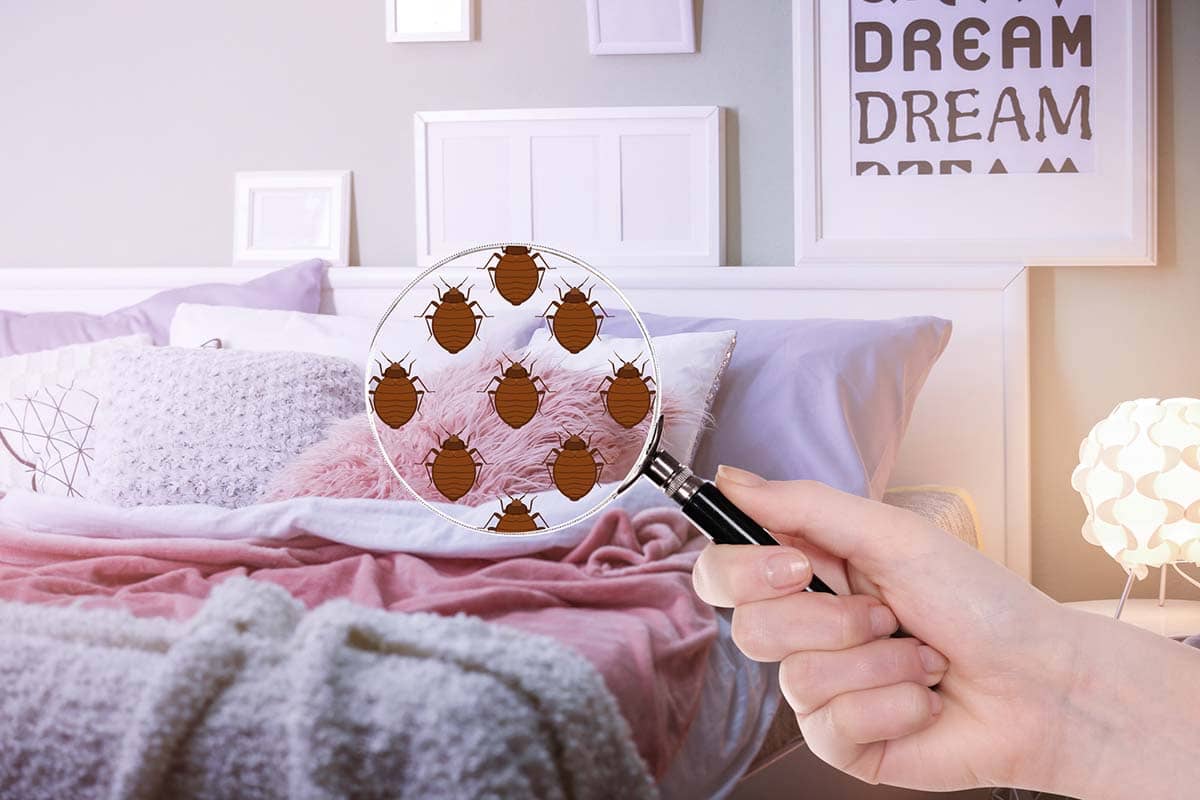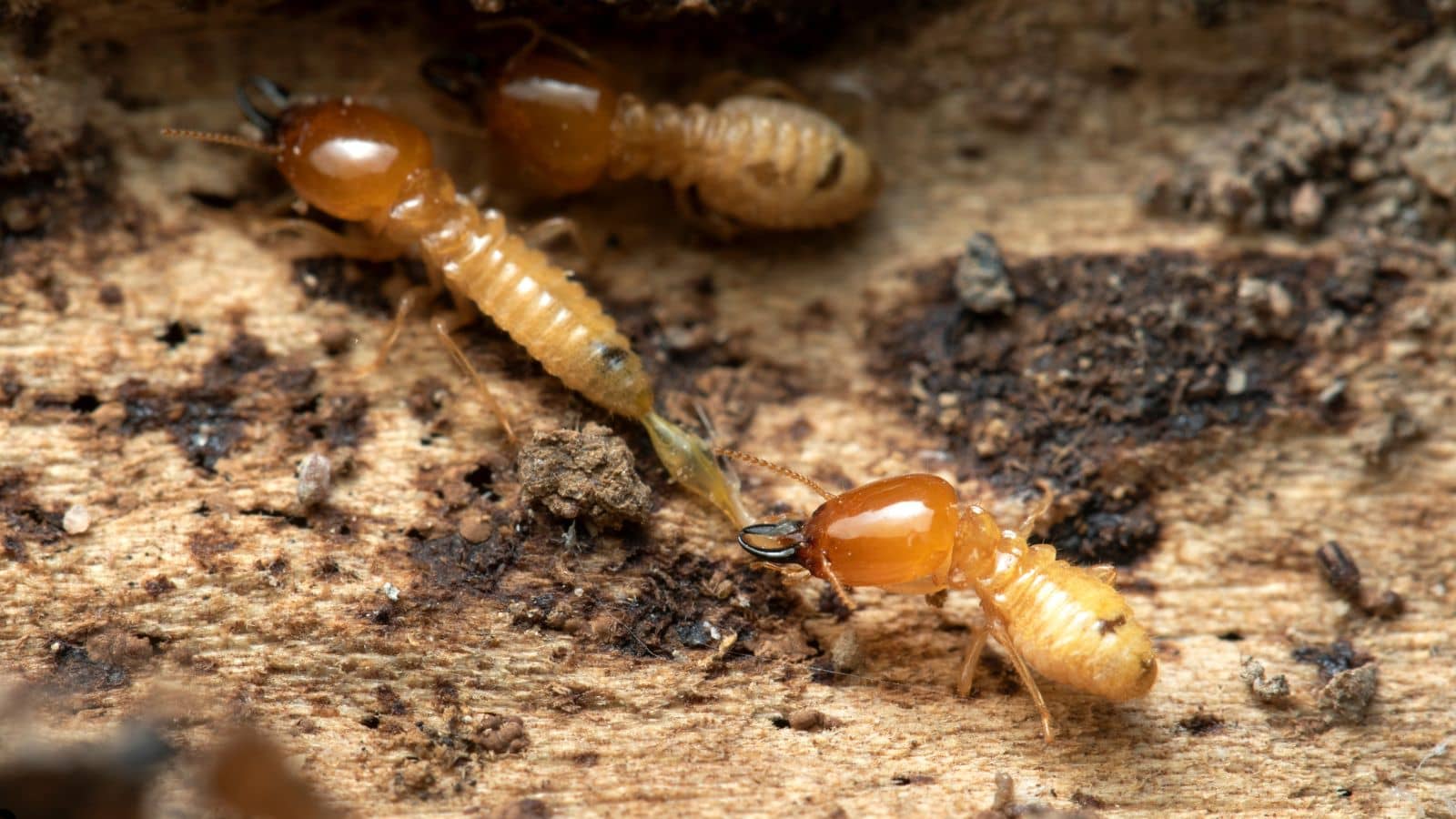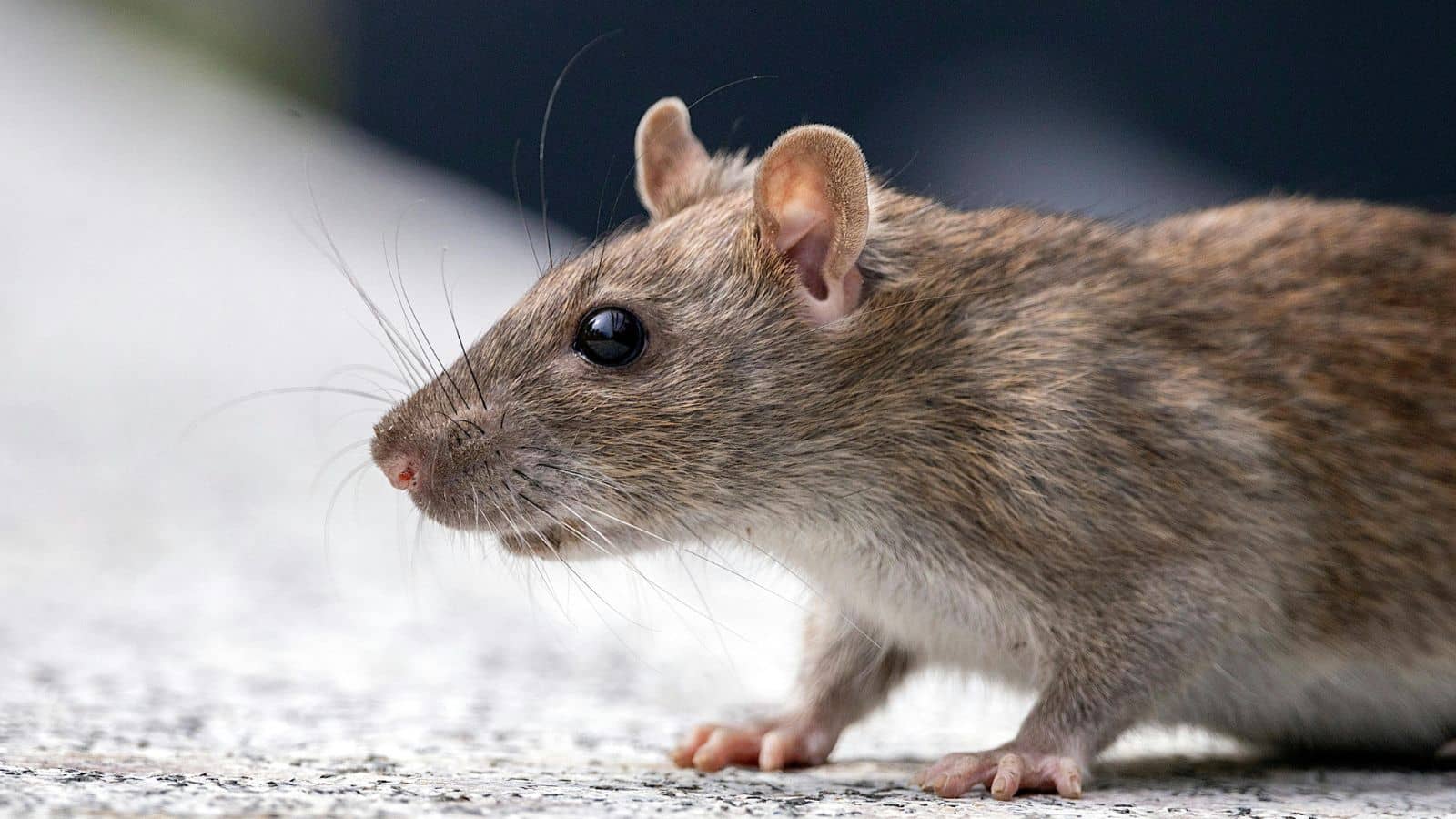Bed Bugs in Sacramento: How much do you know about the bed bug life cycle? Read on to learn what you need to know on the subject.
Your bed should be your haven. You deserve to sink into a comforting oasis of sheets, blankets, and pillows and never think twice about whether there’s an unwanted pest nearby.
Unfortunately, bed bugs are a reality, and they can affect anyone.
While no one wants to deal with these pesky bugs (or their eggs), knowledge is key to identifying them as early as possible. When you understand the bed bug life cycle, you can take immediate action and prevent the infestation from worsening.
Today, we’re taking a closer look at what happens in every stage and how to identify exactly what you’re dealing with. We’ll also share how our bed bug treatment approach can help Sacramento homeowners get rid of those icky intruders for good.
What Are Bed Bugs?
Bed bugs are small insects that feed on the blood of humans and animals. Before a feeding, an adult bed bug will have a flat, oval-shaped body that is about one-quarter of an inch long. After feeding, their bodies swell up and turn from brown to red.
Bed bugs are drawn to the carbon dioxide (CO2) that’s released when humans breathe. When they find a living blood source, they’ll set up shop and invade during the night, usually completing a meal without waking you at all.
While it can be difficult to spot a full-grown adult bed bug, it’s even more challenging to find their babies. Female bed bugs can lay hundreds of eggs in their lifetime, and each one is no bigger than a speck of dust.
These insects are wingless that do not fly or jump. However, that doesn’t mean they can’t move quickly. In fact, bed bugs are notoriously speedy crawlers and can move around an entire home faster than you’d expect.
During the day, they love to hide out in dark crevices, such as mattress seams, bed frames, box springs, and headboards. You can also find them in cracks and seams along the walls and floors. They can even live within your furniture.
Where Do Bed Bugs Come From?
Bed bugs usually enter your home by traveling on infested clothes or furniture. For instance, they’re known to hitch a ride on luggage, which enables them to move from an affected hotel room into your house. They can even travel from one apartment or condo unit to the next because they are small enough to slip through even the smallest cracks.
When this happens, it’s almost impossible to know it. These insects are small and they know exactly how to hide to prevent detection. The pests are nocturnal, meaning that they’re asleep when you’re awake, and they rise and shine as soon as you turn in for the night.
Signs of Bed Bugs in Your Home
There are a few signs that you’re dealing with bed bugs in your home. While these pests can look similar to other insects, it helps to know the telltale symptoms that are specific to them alone.
The first is a physical reaction. Most people are sensitive to the proteins in a bed bug’s saliva, though some people will not develop symptoms at all.
If you have a reaction to a bed bug’s bite, you may develop red, itchy welts on any part of your body. In most cases, multiple welts will appear in clusters or a line-shaped formation. They’ll usually show up on areas of your body that are exposed while you sleep, such as your arms, face, and neck.
Unlike other bugs (like mosquitoes), bed bugs have no problem burrowing into and under your clothing while you sleep. That means you might wake up with welts along your back, even though you had a shirt on the whole night. Some people even report bites under the elastic waistband of their pajama pants.
You may also notice other signs of bed bugs in your home, including:
- Specks of blood on your sheets or pillowcase
- A musty odor in or around your bedding
- Brown or red splotches on your mattress, clothes, or furniture (excrement)
- Shed skins or eggshells in common hiding places
While it can be disheartening to discover that you’re dealing with a bed bug infestation, you can take action. It all begins with understanding which life cycle stage they’re in.
A Close-Up Look at the Bed Bug Life Cycle
Like any other pest, bed bugs have a distinct lifecycle. The ones in your home could be at any stage. Or, you might have a full-blown infestation where all stages of the life cycle are present!
Let’s take a look at the different phases to know.
Bed Bug Eggs
Bed bug eggs are about one millimeter in diameter. They are milky white and each one is about the size of two small grains of salt. Because of their tiny dimensions, they can be difficult to spot.
Female bed bugs can lay up to five eggs per day. In their entire lifetime, they can produce up to 500 of them! This is why it’s so important to catch an infestation before it spreads too rapidly.
Usually, adult female bed bugs will lay their eggs along tight cracks or crevices. For instance, you may find a single bed bug egg along the seam of your mattress, on your box spring, or in another inconspicuous place. Or, you might discover an entire cluster of them, which will be easier to see.
If there are multiple generations of bed bugs in one place, the female will usually lay her eggs near the hiding places of the adult bugs. The eggs stay in place with a sticky, cement-like adhesive substance that the female also produces. After about five days, the white eggs will develop a small black speck on their surface, which signifies that hatching is about to begin.
In all, it takes about two weeks for a new bed bug egg to hatch. Once it does, those immature bed bugs will immediately look for a source of food. If they cannot find a human source, they will also attempt to feed on any warm-blooded household pets.
Stage 1 Nymph
A newly hatched bed bug is called a nymph. Most nymphs are relatively translucent, and the color of straw. After they complete their first meal, they will start to turn redder in color.
Each nymph will go through five different stages before it becomes a grown adult that’s sexually mature and capable of breeding. They will shed their exoskeletons after each nymphal stage. Note that while nymphs can appear similar to adults (especially in their later nymph stages), they will usually be smaller in size and different in color.
Bed bug nymphs are yellow or white, while adult bed bugs are reddish-brown. Stage 1 nymphs are about 1.5 millimeters in length. Despite their small size, baby bed bugs can bite you just as frequently and seriously as adult ones!
Stage 2 Nymph
When a Stage 1 nymph has gone through its first molt, it will transition into a Stage 2 nymph. At this time, the bed bugs are about two millimeters across.
To enter each molting stage, the immature bed bug must complete a feeding, or blood meal. Each blood meal takes around five to 10 minutes. This is why bed bugs primarily feed on humans at night when they aren’t moving around and are easier to access.
Stage 3 Nymph
When a bed bug nymph molts a second time, it becomes a Stage 3 nymph. These pests are about 2.5 millimeters in length.
Stage 4 Nymph
After the third molting, the bed bug will become a Stage 4 nymph. At this time, it’s around three millimeters across.
Stage 5 Nymph
Once the fourth and final molting is complete, the bed bug becomes a Stage 5 nymph. This is the final nymph stage in the bed bug lifecycle. During this time, the pests can grow up to 4.5 millimeters long.
Each stage of the nymph life cycle takes about one week. Thus, a newly hatched bed bug can go from Stage 1 nymph to adult in about five weeks, as long as the bugs stay at room temperature. However, this process can also take as long as four to six months, depending on the temperature of your home and the bugs’ food supply.
Adult Bed Bugs
When a bed bug reaches the adult stage, it is fully grown. This means it’s capable of breeding and reproducing. Once they mature, most bed bugs will require at least one feeding per week.
It isn’t fun to think about how quickly a bed bug infestation can get out of hand. Yet, by understanding how their life cycle works, you can understand whether you’re dealing with eggs, nymphs, adults, or all three phases. In just a month or so, you could go from having one or two eggs to a full-blown population.
The Bed Bug Lifespan
Most bed bugs live around four to six months in all. Yet, this isn’t always the case. In fact, as long as your home remains relatively cool, an adult bed bug can exist for around one year, even without its requisite weekly feeding! This means you could spot an infestation, leave your house for a few weeks on vacation, and return to find that the bugs are still alive and well.
As such, you might find that you only see signs of an infestation sporadically. For instance, you may wake up with itchy welts one morning, and not see any new bites for a few weeks or more. While it’s tempting to assume that the problem simply went away on its own, this isn’t what’s happening.
As soon as the bed bugs become hungry again, they’ll leave their hiding places and attack once more. If you see even the smallest sign of a bed bug, such as one eggshell or a small nymph on your mattress, it’s time to hire bed bug control services.
It’s critical to take action and remove the bed bugs at the very first sign of an infestation. If left untreated, you could be left with tens of thousands of bed bugs living around your home in just six months. These pests are built for survival, and populations will not usually die off on their own.
Dealing With a Bed Bug Infestation
Bed bugs are very small. Yet, keep in mind that they are not invisible. If you suspect that you’re dealing with an infestation, you will need to thoroughly inspect all questionable areas. You may find a magnifying glass is helpful to check in tight spots.
However, your best course of action is to always call a professional exterminator. These experts will know precisely where to look for bed bugs, including spaces you might have missed, such as inside electrical outlets! They will also be able to effectively treat the entire population to make sure it’s fully eradicated for good.
Our Proven Approach
At Official Pest Prevention, we’ve seen our fair share of bed bug infestations. We know exactly how to find these pests and their eggs, and get rid of them forever.
Not only does our treatment method kill live bed bugs on contact, but we’ll also treat all cracks and crevices to make sure we get the hidden ones, too. We’ll even install monitors to make sure we’ve fully eliminated the pests, and we’ll conduct weekly follow-up inspections, treating any residual bugs as necessary.
Our treatment won’t stain any surface of your home, and it requires minimal prep on your end.
Get Rid of Bed Bugs For Good
If you spot even one bed bug in your home, it’s likely that an infestation is already underway. It can be impossible to identify and eliminate them all on your own, and that’s why we’re here to help. We’re well-versed in the bed bug life cycle, and we know how to spot the pests at each stage.
Our proven treatment approach allows you to reclaim your home and sleep better at night. If you’re a Sacramento homeowner, don’t toss and turn! Call our team today for an inspection and let us take care of the rest.
Official Pest Prevention is a family-owned, licensed pest control company celebrating 20 years serving over 100,000 satisfied customers in five area codes throughout Northern and Central California. Starting with a few contacts, and only four full-time employees, our small company has grown into an organization that today employs over 100 people, maintains a fleet of 75 vehicles, and has serviced over 100,000 Northern California households. This tremendous growth has come from loyal customers, who have recommended our work to their friends, family, and neighbors.
We are a full-service pest control company. Whatever your pest problem, we have a solution. Our goal is to make your property pest-free. Guaranteed. Contact us online or by phone (877) 711 2847 – for immediate assistance. Same-day bookings and flexible payment plans available – because pest invasions wait for no one.





